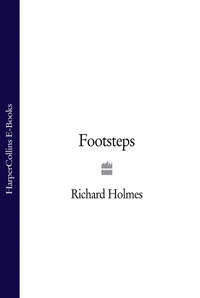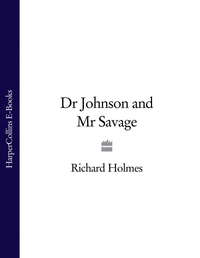
Полная версия
Falling Upwards
But usually the Victorian balloon had far more progressive associations. Scientific ascents also took place from Vauxhall Gardens, manned by serious gentlemen in top hats, prepared to observe and measure and speculate.
The use of the aerial panorama was even encouraged as a tool of sociological investigation. By studying the city from above, with the objective ‘angel’s eye’, it was possible to reveal much about its social structure, its balance of commercial and private dwellings, and especially (as both Poole and Mayhew had remarked) its savage contrasts of rich and poor. One indirect result of this was the famous ‘poverty maps’ compiled by the philanthropist Charles Booth in the 1880s.
These, with their colour codings and careful urban annotations, adapted the balloon overview as a technical device for compiling and storing new kinds of information. Here the ‘angel’s eye’ has become both analytical and philanthropic. The balloon perspective has become an expression of the Victorian social conscience. The ‘panoptic’ view leads potentially to both planning and improvement. It is ‘godlike’ in a new, secular way. It is an instrument of social justice, even moral redemption.
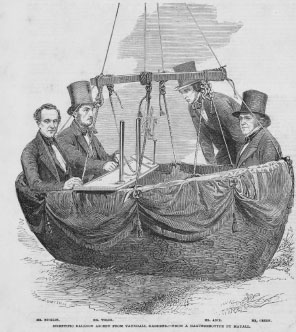

Another, more commercial, use of the panoramic ‘airborne’ view was to develop a new kind of tourist’s or visitor’s guide to the great cities. These were particularly successful with the main landmarks and thoroughfares of London and Paris. They invited the newcomer to overfly the great metropolis in imagination, to float calmly above its streets and squares, and to link one district with another. Thus journeys could be planned in a new way, and the visitor could achieve a new kind of ‘orientation’. They may even have helped people to think about the layout of big cities in a different way, no longer as a series of fixed localities or distinct villages, but as a flowing, dynamic urban environment actively linked by a moving network of cabs, horse-drawn omnibuses and trams; and later by underground railways and motor cars. Indeed, the first section of the London Underground (part of the Metropolitan and City Line) opened as early as 1863.
Panoramic, fold-out maps began to be published in the 1850s and 1860s, forerunners of the famous A to Z guides. One of the most successful was published by Appleyard & Hetling in 1854, ‘In a Case for the Pocket’, priced one shilling and sixpence. It was comprehensively entitled A Balloon View of London Taken by Daguerreotype Process, Exhibiting Eight Square Miles, Showing all Railway Stations, Public Buildings, Parks, Palaces, Squares, Streets etc … Forming a Complete Street Guide.7 In fact the ‘daguerreotype’ claim was certainly misleading, as there is no record of a genuine aerial photograph of a city before 1858–59 (Paris and Boston were to be the first). But the combination of balloon and photography evidently had a fashionable, up-to-the-minute appeal.
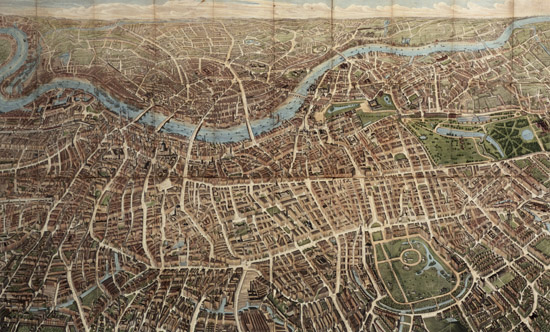
The ‘angel’s eye’ might also be used to celebrate or commemorate particular events. One of the most memorable of these was the airborne view of the Great Fire of Newcastle, which broke out at one o’clock in the morning of 6 October 1854. Starting with a horrific explosion in a chemical warehouse in Gateshead containing hundreds of tons of sulphur, naphtha, brimstone, and arsenic, the flames leaped across the river Tyne into Newcastle and burned for two days, causing over a million pounds’ worth of damage, and terrible loss of life.
An image of this catastrophe was presented by the Illustrated London News on 14 October, like an action photograph taken from a balloon. From an imaginary viewpoint some five hundred feet above Gateshead, it gives a startling panorama of houses, bridges, churches, quaysides, ships and factories, looking across the Tyne towards the great railway viaduct running through the centre of Newcastle. The pale autumnal tone of the print, predominately blue and white, is clearly the wan, aching light of dawn. But the picture is also realistically coloured and animated with leaping flames, wind-torn smoke and tiny fleeing figures, as if it was being observed in real time. (To the modern observer there is an unmistakable resonance with the hurrying, peopled cityscapes of L.S. Lowry.) It achieves a kind of mythic quality, a vision of the industrial city devoured by fire, the icon of a modern secular version of hell. Or perhaps more accurately ‘cleansed’ by fire, and thereby becoming a kind of purgatory.
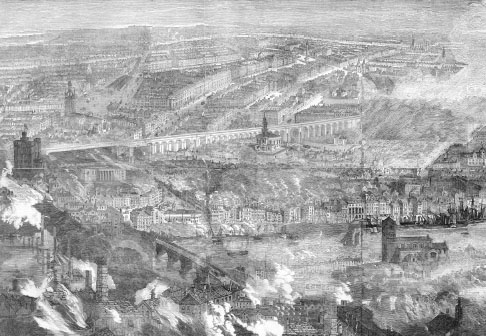
The picture was published above a vivid piece of reportage, which itself achieved the extraordinary effect of an all-seeing eye.
The streets in the neighbourhood of the explosion presented a most melancholy spectacle. Men, women, and children in their night dresses might be seen rushing from their abodes in search of shelter, they knew not whither. In Gateshead particularly the scene was most distressing – mothers were vainly trying to return for a child, forgotten in the suddenness of escape – and children were searching for their parents. The quay on the Newcastle side of the river was literally strewed with burning staves and rafters, covered with sulphur, and burning like matches. Adults and children, confused by the awful catastrophe, went staggering to and fro as if intoxicated, uttering lamentable and piercing cries. At one time the whole town seemed to be devoted to the rampant agency of fire … The shop fronts and windows upon the Quayside, the Sandhill, the Side, and all the neighbouring streets, were almost universally blown out, and the gas lights, for a square mile around the spot, were extinguished in a moment, adding a weird and horrible confusion to the scene. The streets rapidly filled with the entire population of the lower parts of Newcastle, hundreds of them in their night clothes, and seriously injured. The blood-begrimed countenances of many, and the shrieks, wailing, and lamentations to be heard on every side, commingling with the voices of others devoutly calling upon the Lord to have mercy upon them, made up a scene which has been seldom paralleled. 8
The fire’s impact was so great that a national disaster fund was launched to relieve the destitute citizens, and the first contribution was made by Queen Victoria herself. The Illustrated London News reported a striking example of Victorian philanthropy: ‘The public sympathy for the numerous poor families, who were rendered destitute by this terrible catastrophe, was displayed in the most marked manner throughout the kingdom. Upwards of £11,000 were subscribed for their relief. No less than eight hundred families applied for assistance from the funds …’ Money was also given to institutions like the Newcastle Infirmary and the Gateshead Dispensary. The image of the burning northern industrial city, with its displaced citizens wandering the streets like lost souls in purgatory, struck very deep. It was said that Queen Victoria, in an unprecedented departure from royal protocol, ordered that the royal train on the way to Balmoral should halt on the famous High Level Bridge above Gateshead so she could look down at the devastated city and weep.
Balloons were also used to celebrate colonial cities, and inspire imperial links, notably in Australia. In 1858 the British balloon the Australian made some startling flights over Melbourne and Sydney. There was a late-summer-night ascent in March from Cremorne Gardens, Melbourne, in which a basketful of local dignitaries sailed over the Botanical Gardens in bright moonlight, with a magical sight of the festival fireworks far below. But, attempting to land at Battam’s Swamp, they found themselves in a working-class district, and the balloon basket was seized by a violent crowd. Amid vocal democratic objections to such ‘superior’ transport, the distinguished guests were forced to escape by jettisoning champagne bottles, picnic hampers, several bags of sand ballast, and finally throwing off a few hardy objectors still clinging to the sides of the basket. Unlike America, ballooning in Australia remained an essentially urban entertainment. There is no record of any practical attempts to explore the Australian interior by balloon at this time. Burke and Wills, starting on their epic journey from Melbourne to the Gulf of Carpentaria in August 1860, stuck firmly and fatally to the ground.fn15
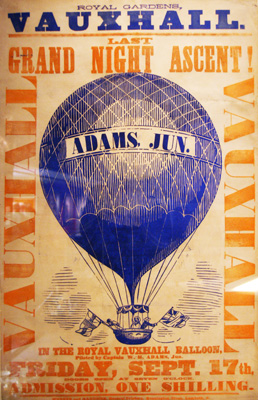
Vauxhall Gardens finally closed after its ‘Last Night for Ever’ on 26 July 1859. Many reasons were given for this. The proprietors blamed the magistrates who continually banned their most popular attractions as either too dangerous, or too disruptive to the newly respectable neighbourhood of Kennington. Ballooning and fireworks displays were particularly blamed for this. But other factors certainly played a part: the gardens had become run-down and tawdry, and were considered old-fashioned; the railway, which ran past the main entrance, had made travel further afield much easier and cheaper; seaside towns, with their Vauxhall-like piers, were becoming fashionable; and, finally, the site itself was too valuable as property, and the blandishments of developers eventually persuaded the proprietors to sell up.9
At about this time Charles Green, after more than five hundred successful ascents and now in his seventies, also went into retirement. He purchased an elegant little house on a hillside above the Holloway Road, North London, and named it ‘Aerial Villa’. But he kept a weather eye on the horizon.
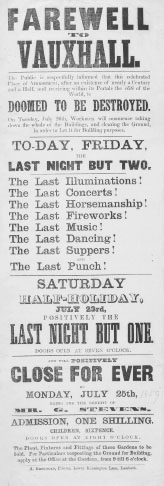
Конец ознакомительного фрагмента.
Текст предоставлен ООО «ЛитРес».
Прочитайте эту книгу целиком, купив полную легальную версию на ЛитРес.
Безопасно оплатить книгу можно банковской картой Visa, MasterCard, Maestro, со счета мобильного телефона, с платежного терминала, в салоне МТС или Связной, через PayPal, WebMoney, Яндекс.Деньги, QIWI Кошелек, бонусными картами или другим удобным Вам способом.







